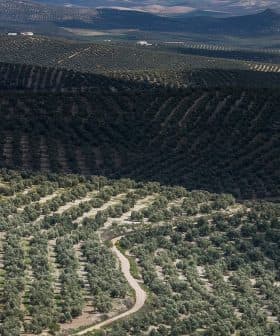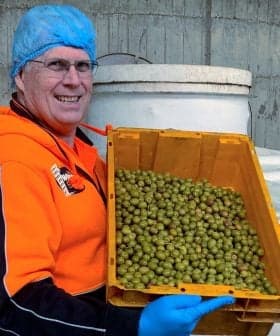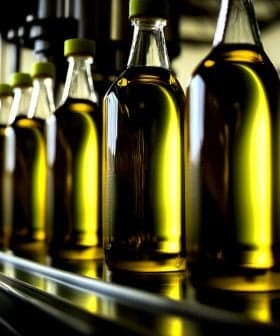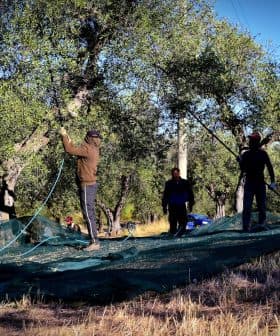 16.8K reads
16.8K readsOlive Varieties
The Best Olive Varieties for Hobby Growers in Northern California
Olive trees are increasingly popular in California for both commercial cultivation and home gardening, particularly in Northern California where the climate is ideal. Different olive varieties, such as Mission, Arbequina, and Manzanillo, offer unique flavors and adaptability for home gardeners, but require full sun, proper watering, and care to produce fruit. Harvesting olives for table olives or oil is labor-intensive but possible with the right tools and knowledge.
Olive trees are becoming an increasingly commercial crop in California. However, they are also an excellent option for home gardeners.
This is especially true in Northern California, where the climate and soil conditions perfectly suit olive tree cultivation.
“They’re pretty easy to grow in our area since we might as well be in the Mediterranean out here in Sonoma County,” Lindsay Beem of Urban Tree Farm in Fulton told Olive Oil Times.
See Also:Meet One of Spain’s Hobby Olive GrowersBeem noted that each variety has a unique appeal to home gardeners.
Mission olives are a classic variety that produces juicy plump olives, ideal for table olives or oil. Olive lovers tend to rave about their strong flavor and robust essence.
“Mission olives grow well and produce lots of fruit,” Andrew Kimes, co-founder of Jungle Bamboo and Palm Nursery in Cotati, told Olive Oil Times.
Sometimes called the California Mission, the olives from this tree have a bold flavor that may have peppery notes.
For gardeners looking for a smaller variety, the Arbequina is perfect. The hardy trees are versatile and grow in various conditions, making them well-suited to the ups and downs of the California climate.
PlantNative describes this tree as highly adaptable and able to survive temperatures as low as –7 ºC. It can be grown both outdoors and indoors. Arbequina is prolific, known to produce up to 10 kilograms of olives per tree.
Arbequina olives are often described as ‘nutty and buttery’ and frequently compared to the flavors of almonds or hazelnuts.
The Frantoio tree is said to be highly productive, and the medium-sized olives are known for their pleasing fragrance. According to PlantNative, these olives are filled with 80 percent pulp and can be used for curing or olive oil.
Frantoio olives offer pleasant shading and comfort for outdoor sitting, dining and gardening. Planting more than one Frantoio tree is a way to encourage trees to produce even more.
This is a smaller variety many home gardeners favor. The olives tend to be flavorful and small.
According to PlantNative, the Manzanillo flowers and silhouettes bring the Mediterranean into your backyard.
A special bonus of the Manzanillo olive is the fruit. It is known for its meaty olive flesh and 85 percent pulp, making this variety an ideal choice for home gardeners.
“Manzanillo is probably the most common for table olives, as the fruit is huge and meaty, and it’s what you usually find used for canned olives,” Beem said.
“Manzanillo grows well and produces lots of fruit,” Kimes added.
PlantNative describes the Maurino olive as well-suited to tight areas and windy conditions. This variety is known for its high yield of olives. They need pollinators to produce, making this ideal for planting with other trees such as Frantoio.
Meanwhile, Koroneiki olives are self-pollinating and often transformed into olive oil. The elegant classic tree has glossy leaves and yields oval-shaped fruits.
Especially for new gardeners, sun, soil and watering tips contribute to the successful growth of an olive tree.
“Olives need full sun to grow their best and especially to produce really good crops of fruit,” Beem said. “It is never a good idea to plant olives in any type of shade.”
“Fertilizer is a must during the growing season,” she added. “For new gardeners, amending clay soil is especially important since olives appreciate good drainage.”
“Olives are considered drought tolerant once established, but ‘once established’ means after three to five years. So they still need regular water to get established,” Beem continued. “If you are growing the trees to produce fruit, it’s best to give them at least moderate water their whole life, if not as regular as during the growing season. The tree is drought tolerant but does just fine with extra water.”
According to Beem, many hobby growers do not realize the difference between green olives and black olives is the stage of ripeness on the tree.
“If you want green olives – pick them early,” she said. “If you want black olives – let them darken on the tree. They don’t come from different trees; just a matter of how long they get left on the tree.”
“The black olives you get in the can are generally dyed – so natural ‘black’ olives are more dark purple,” Beem added. “They don’t come from different trees. It is just a matter of how long they get left on the tree.”
Making table olives is possible, especially for ambitious food lovers.
Olives need to be harvested at the proper time, which tends to be in the autumn and winter. After harvesting, the leaves and debris must be removed to prepare the olives correctly.
Raw olives must be prepared in brine, a water and salt solution. This process requires soaking the olives for several weeks. Brining removes the bitterness and enhances the flavor of olives. After brining, many home growers enjoy adding other flavors such as garlic, herbs, and lemon.
While harvesting, cleaning, brining and storing may not sound too intimidating, it is labor-intensive. To be successful, organize all the ingredients, gather the necessary tools and allow plenty of time for the work required.
According to Beem, it is also possible to make olive oil from backyard trees. However, the process is also quite labor-intensive.
To make olive oil at home, one must harvest ripe olives, remove all the pits, and crush them. Some home gardeners use a mortar and pestle to crush small batches of olives into a paste. The paste is pressed into oil using a hand-operated crank or hydraulic press.
“It’s good to consider your site and do your research,” Beem said. “The amount of olives depends on the size of the trees and the amount of fruit that is produced.”









